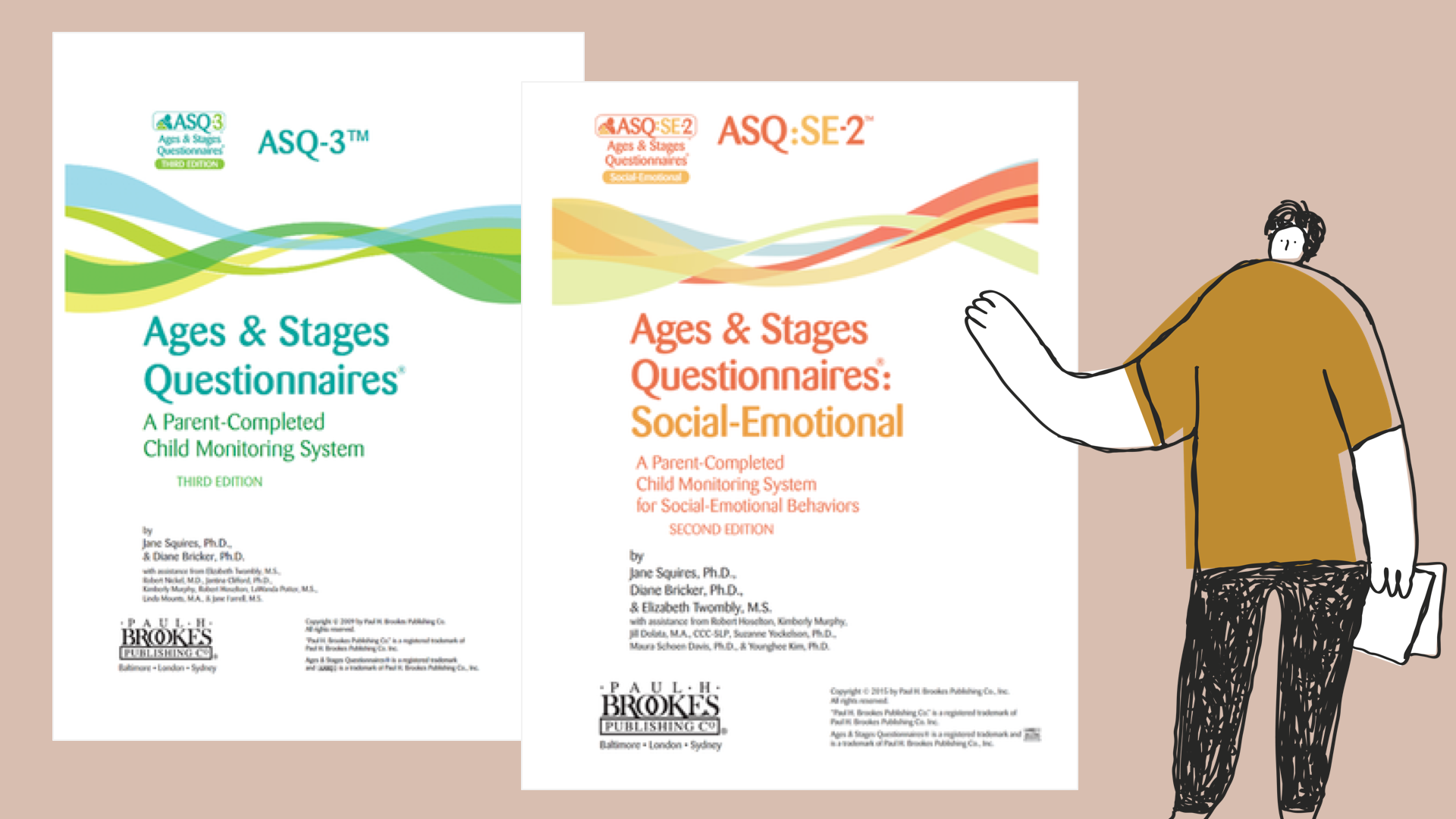Introduction
Early identification of infants & children who have developmental delays or disorders is key.
Note that there are various developmental screening tools used to meet program requirements. The Ages & Stages, 3rd edition (ASQ-3) AND ASQ Social Emotional, 2nd edition (ASQ: SE-2) are commonly used throughout the early education field.
We developed this supplemental training module as a result of requests from our Monarch Link members.
Watch Training Video ❯
Sample Forms/Tools ❯
Review Sketch Pad Notes ❯
What is the ASQ
Ages & Stages, 3rd edition (ASQ-3) is a first-level comprehensive screening & monitoring system used to identify developmental delays & disorders that may or may not require early intervention services.
The ASQ-3 system includes questionnaires designed to be administered at 21 different ages. Each age-level questionnaire includes 30 questions and an overall section, all of which are designed to assess 5 developmental areas.
Communication
Gross motor skills
Fine motor skills
Problem solving
Personal social
Ages & Stages: Social Emotional, 2nd edition (ASQ:SE-2) is designed to accompany the ASQ-3 general development screening tool. It focuses solely on assessing a child’s social–emotional development by targeting specific behaviors.
Who uses the ASQ
Parents: The ASQ-3 & ASQ:SE-2 are designed for parents to complete as parents know more about their child than anyone else.
Educators: Answer any questions a parent may have & score the questionnaire. In addition, initiate appropriate interventions with therapists, pediatricians or special education programs.
Why use the ASQ
Early detection & identification of developmental delays & disorders is essential to a child’s future.
Commitment to monitor the development of designated groups of infants & children who may be at a greater risk of having a disorder or experiencing a delay in development.
Backed by over 30 years of extensive research & is based in sound child development & assessment principles.
Does not requiring extensive training because it is easy to administer and score.
Flexible because each questionnaire can be used at designated intervals or one time only.
Appropriate for use with diverse ethnicities & socioeconomic backgrounds.
Designed to be administered in 10-15 minutes & scored in less than 5 minutes.
When should the ASQ be administered
Administer any time between the ages of 1 month and 5 ½ years.
At the time of initial enrollment is the best time to to introduce the purpose of ASQ-3 & ASQ:SE-2 screening to parents & including it as part of a universal process prevents the child or parents from feeling stigmatized.
The easiest way to determine the correct age-based questionnaire is to use the free calculator available on the Ages & Stages website.
Where to administer the ASQ
Flexible screening settings may include, but not limited to:
Schools
Child care facilities
Doctor office
Screening clinics
More important than the setting is making sure the child is rested, fed & views the screening process as a “game”.
How is the ASQ administered
Steps to Complete:
Staff explains & reviews the screening tool with parent (avoid using pass or fail language or stating that this is a test)
Obtain parent consent
Select age-appropriate questionnaire (ASQ calculator)
Parent answers questions
Staff scores (transfer info to score sheet to interpret the results)
Results & next steps
Above cutoff: Talk to parents about opportunities to practice skills, provide activities & plan to screen at a later date
Near the cutoff (monitoring zone): Weigh parents’ concerns. May refer for further assessment and/or provide follow-up activities & plan to screen again
Below cutoff: In partnership with parent, make referral for further assessment or intervention
NOTES:
Before making a referral, take into account factors that may have influenced a child’s scores, such as the setting or time of day of screening, health & family or cultural factors.
As you administer the ASQ-3 & ASQ:SE-2, remember that these are screening tools & not a diagnosis. They are tools to identify areas of concern. There may not be anything developmentally wrong with the child, it may be that the child was simply not exposed to a specific learning experience.
Complete Knowledge Check ❯
After reviewing BOTH training videos & sketch pad notes, it’s time to check for understanding by completing a Knowledge Check. Note that Individual Knowledge Checks will conclude with a Certificate.









